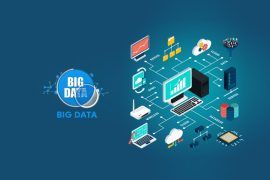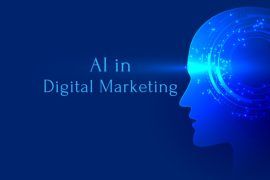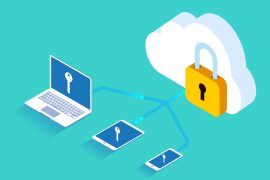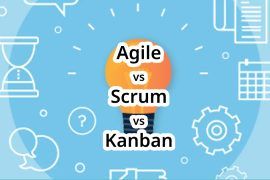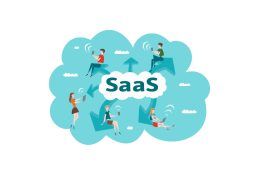Technology is continually growing and changing in tandem to keep up with the rapid pace of life. With the advent of cloud computing SaaS (Software as a service) is the norm. The benefits associated with the SaaS model outweigh the negatives. This popularity is the undisputed SaaS benefit. The old system of software packaging and distribution means that every client receives from a service an application and is required to install it into a different environment and adhere to strict specifications for operating systems as well as the database system and more, according to the version of the software that was purchased. Different environments can result in the need for software modifications that meet the particular environment’s requirements. In the absence of this, software may fail to function. As a business owner, you must allocate resources for managing, updating, and maintaining these modifications.
The traditional software-based business model could cause additional operational expenses per new client as cost optimization alternatives are typically limited. This one-off business model is suitable for growing companies, and the number of customers is low. In this instance, the requirement to provide distinctive features to every setting is a potential sales instrument. As a business expands exponentially, new customers are quickly added, and the additional expenses that come with the growing number of committed teams can reduce the overall profits. Traditional software business models hinder a company’s growth rate and don’t permit keeping pace with market trends. The effort to incorporate the latest features into customer systems could reach subjective and subjective boundaries, preventing possible revenue sources for business owners who run the software. To handle these complex issues, dedicated teams need to devote more time to analyzing features, which results in slowing their delivery to the client. Focus shifts from providing on time to ensuring. Testing new features takes all the operations.
Teams dedicated to a particular area are focused on overhead tasks and the technical aspect of testing. This leaves little time to develop new services to propel the business forward. Suppose you accept this slower pace and take a cautious approach. In that case, the development cycle can accelerate dramatically, creating huge gaps between the phases in which the idea is conceptualized to be built and delivered to a client. Combined, these factors can force competitors’ efforts forward and leave them in comparison to the competition. Let’s get going.
Table of Contents
What is SaaS?
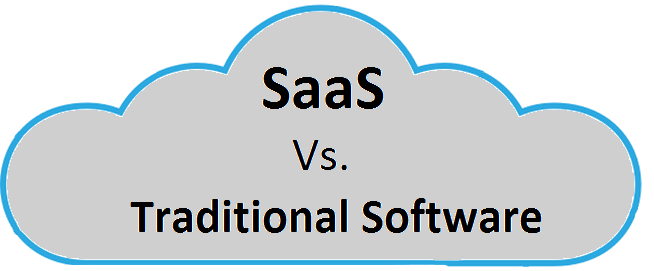
Software-as-a-Service (SaaS) is a cloud-based software delivery model that allows end users to access software applications over the Internet. In the SaaS model, the software is stored on remote servers, updated and maintained by the provider, and then made accessible to users through web browsers, mobile applications, and APIs.
SaaS has many benefits for users compared to conventional software delivery models, including lower initial expenses, increased scalability, flexibility, and access.
Since the software runs on servers of the service provider and users are not required to pay for expensive infrastructure, utilize the application. Instead, users are charged a fee for a subscription for access to the software. It is an online service.
What is Traditional Software?
Traditional software has been available at retail shops for a long time. Also often referred to as shrink-wrapped or packaged software. It’s the kind of program you purchase from the shelves at the local computer store and bring to your home. The past was when businesses were built around a one-to-many relationship. Companies would develop goods and services for their customers, who then buy.
The business model that is emerging today is founded on multiple-to-many connections. Businesses must make their clients feel vital to their enterprise by engaging customers and allowing them to speak.
The traditional software program is installed, runs on a computer, and is desktop dependent. The software is connected to an internet-connected server. The server provides business-stored information and programs to every employee using the device.
Every company requires a safe and secure data storage space that allows data and apps to access quickly and with little cost of operation. SaaS is a SaaS development model that has a variety of benefits for startups as well as already-established companies.
Benefits of SaaS over Traditional Software
Traditional software is being driven out in favor of the software-as-a-service approach. Here are the advantages of SaaS in comparison to traditional software:
1. Accessibility
SaaS development provides out-of-the-box functionality. Since SaaS can be accessed via the cloud, users can quickly access their software anywhere globally since each user is assigned a login. Access your SaaS apps from every device, including smartphones, tablets, laptops, etc. This can make the work more efficient and makes it more practical. But, the on-premise software must be downloaded on the user’s computer.
2. Deployment
Cloud-based solutions allow users to begin immediately without needing a long deployment process. Even though traditional software has to be installed to function, it requires an appropriate hardware configuration. Ultimately, you’ll need somebody with IT capabilities to run the entire process. So the process of getting your on-premise software operational takes a few months.
3. Time to Scale
There is no need to fret about maintenance or hardware for SaaS businesses. Cloud-based deployment reduces the project’s overall implementation duration, allowing the SaaS enterprise to realize its value faster. For traditional software, the long-term planning of resources is essential to expand the program in line with growth. You must be able to manage many moving components to run your business efficiently, which takes time.
4. Pricing
SaaS lets you only pay for the services you use and has access to the entire set of tools needed for the company. Suppose the customer pays for higher per month. In that case, SaaS businesses can promptly fulfill the demands as most SaaS service providers provide free trials, allowing you to try the SaaS software and determine which is best for your business or startup without investing any money. Traditional software requires you to pay once, which requires the customer to pay the entire amount in advance.
5. Upgradation
Because cloud computing is cloud-based, SaaS companies and startups SaaS businesses do not need to acquire servers physically. Updates are released regularly and free of charge through SaaS businesses. It allows users to install changes at any moment. Traditional software can be costly. It requires the purchase of the right software licenses per user. The user must be patient with the latest version of the software to come out with the latest features before obtaining these updates. It is necessary to purchase new equipment and server space to adjust to the growth of your business. Server value declines each year, which results in a lower return on investment.
6. The Initial Cost and the Maintenance Costs
With SaaS, there is no requirement to buy additional hardware; consequently, there is no hardware to keep it running. The upfront cost is eliminated. It also makes it easier for customers and reduces expenses for IT support. Multi-tenancy helps keep costs down while allowing SaaS companies and startups to build new applications for various users with identical infrastructure. Registering a new client is usually free, and there aren’t additional fees. In the end, SaaS cost of development and maintenance can be reduced. Traditional software requires customers to spend lots of money on hardware components. Everyone must get a new computer along with the software installed and continue to pay for expenses, including maintenance and upgrades. They are all time-consuming and costly too.
7. Flexibility
The SaaS applications on cloud servers are distributed across all servers. No information is lost if one server goes down, meaning there’s no downtime. Cloud storage provides additional capacity, server resources, and a higher computational capacity. SaaS provides greater flexibility. Traditional software is more flexible and only sometimes guarantees top efficiency. It is necessary to buy an account for each person in your business. There is a limited capacity, and they can be susceptible to interruptions. This could significantly decrease work efficiency.
8. Integration
The ease at which a SaaS solution is integrated with the company’s other software should be a primary concern. Most SaaS apps have integrated tools. Google Suite and HubSpot are fantastic instances that demonstrate SaaS integration. Businesses concerned about privacy may choose conventional software as a third party is not involved.
9. Learning Curves
SaaS software is simple to operate and, therefore, easy to master. There is no need to be an IT specialist to use these technologies. Enterprise apps that were previously unavailable can be easily deployed since users don’t have to download complex software. Traditional software comes with a fast rate of education. It is essential to have experts train your employees on how to become familiar with the software. There is a significant amount of effort and time for an extra expense.
10. Cross-Platform
SaaS applications are accessible through any web browser. This results from more cross-platform interoperability. The users can access the data from any location, even via mobile devices, boosting productivity and improving efficiency. The applications must be designed to work with specific devices within off-site software, and the employees must be specialized.
Conclusion
Each successful company requires a flexible infrastructure supporting hybrid integrations and data transformation. It also allows for rapid and secure transfer of files and end-to-end transparency of all the information flowing throughout their complicated networks. Multi-tenant architectures play the most important and comprehensive function in creating SaaS applications. It. It could be a problem with privacy concerns, data security, and the effort to download the application. The SaaS development platform lets companies start their SaaS application development and communicate with the user at the most convenient speed.

